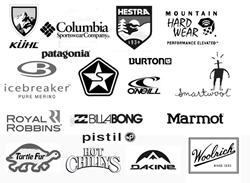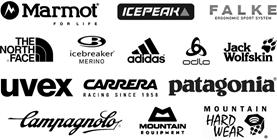
13 minute read
CASE STUDIES
BENTONVILLE, AR
Considered the “Mountain Biking Capital of the World” by many local citizens, Bentonville, AR (pop. 50,000) has been transformed from a town focused on agriculture to a place full of history, culture, and bike paths. With over 350 mi. of mountain bike trails and 130 mi. of shared use paved trails, this area offers options for bikers with a wide range of experiences and abilities. Headquarters for several corporations, including Walmart, the town is only growing in population. Through the efforts of Walmart and other partners, Bentonville has become a destination location.
Historically, the small town, founded in the upper northwestern portion of Arkansas, was an agricultural based community, focused on apple and poultry industries. Beginning in 1950, this would change, with the creation of Walton’s 5 & Dime store, today known as Walmart. As the corporation grew, they struggled to retain good employees at their headquarters. They identified that the major cause of this problem was the living environment of Bentonville. It lacked the uniqueness and culture that attracts millennials, their target employee demographic, to other major urban centers across the U.S. In response, Walmart, along with other partners, would bring in some of the best mountain bike trail designers in an effort to make the community a place that attracts and retains top talent.
As a result, Bentonville, AR is consistently recognized as being one of the best biking communities in the nation, and is used as a model for other towns looking to integrate biking into their own neighborhoods. Their network further solidified their position in the region, connecting the town to major regional bike routes nearby. They are also a model for utilizing mountain biking for tourism. Opportunities exist for riders of all ages and levels of expertise, and draw in an estimated $137 million in economic benefits, according to the Walton Foundation. The success of Walmart’s vision has created an increasingly young and diverse population that is only expected to grow.
The success that can be found in Bentonville provides a model for the Upper Kanawha Valley when considering expanding available mountain bike opportunities. Aspects such as connectivity, inclusivity, way-finding, and trail design techniques can all be referred to during the decision making process. The town also provides emphasis to the economic impact of creating an outdoor recreation destination. By transforming the town into a mountain biker’s paradise and attracting tourists, Bentonville became an appealing location for new businesses, drawn in by economic activity produced by visitors. This relationship between tourists and businesses would work together to create a community in which citizens would want to work, live and play in.

B E N T O N V I L L E , A R
5 RIVERS METROPARK, OH
Nicknamed “America’s Newest Adventure Capitol” by National Geographic Magazine in 2017, Dayton, OH is a great example of a city that transformed itself into an ecotourism destination. Due, in large part, to work from the 5 Rivers Metropark System, the “Gem City” reoriented itself from an area struggling with the loss of industry to an attractive metropolitan area with extensive outdoor recreation opportunities. Visitors now have access to 265 mi. of waterways and 340 mi. of paved trails. Users from several surrounding metropolitan areas, including Cincinnati and Columbus, travel to take advantage of activities such as backpacking, camping, paddling, cycling, mountain biking, and fishing.
Dayton’s history has always been connected to industry, from textiles in the 1800s, to aerospace and industrial manufacturing today. Impacted by the Great Recession in the late 2000s, the city was identified as one of “America’s Fastest Dying Cities” by Forbes Magazine. 5 Rivers Metropark System wanted to change this image and make the city an attractive place to live, work, and play. It is through this idea that their vision was created, to become the “Outdoor Adventure Capital of the Midwest.” The metropark system wished to mimic the relationship between Boulder and Denver, Colorado. Through the implementation of outdoor amenities, they strive to reform Dayton to an outdoor recreational hub to nearby cities. Their vision was a success, and through their planning efforts, the city of Dayton has received national attention for all that the area has to offer to nature enthusiasts and adventurers.
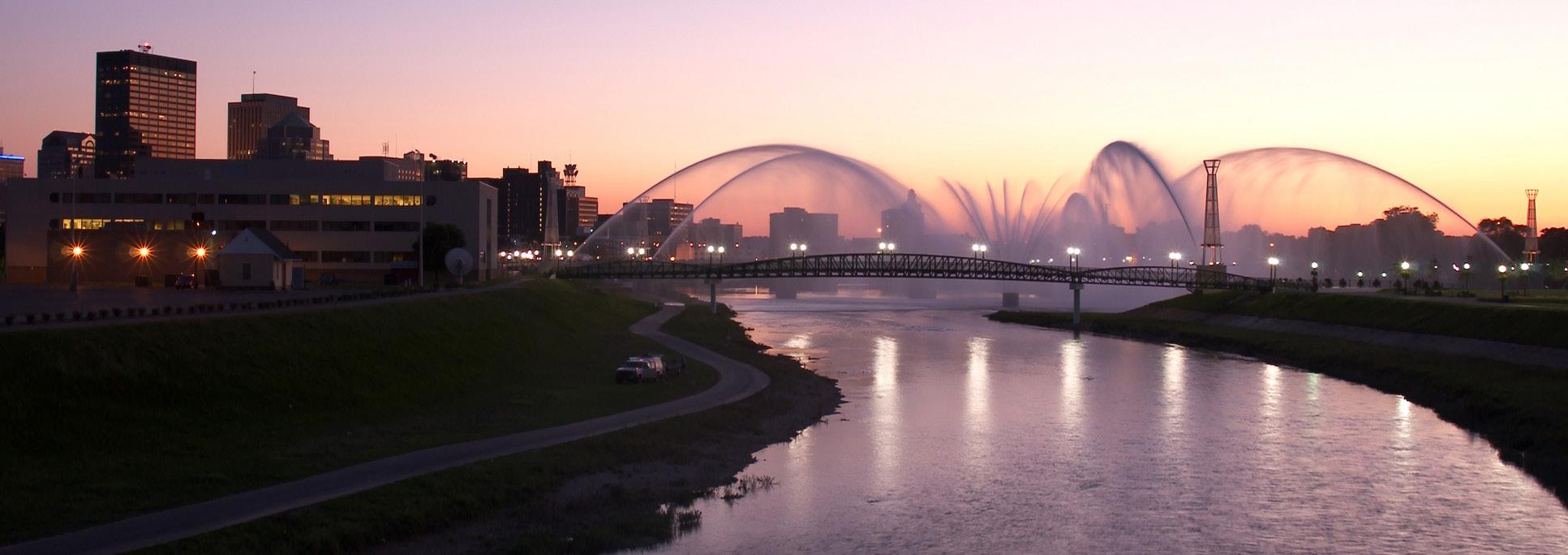
Rivers Metropark, OH Dayton CVB Area Map
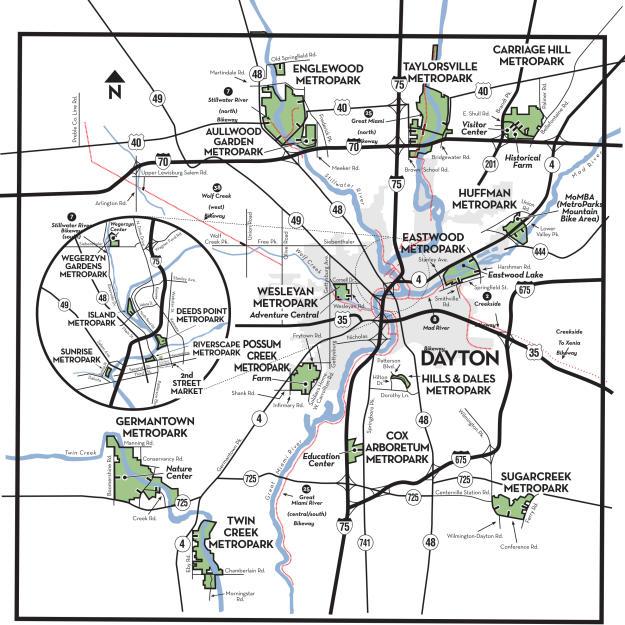
R I V E R S M E T R O P A R K , O H
5 Rivers Metropark had 4 main goals when creating their vision. First, build facilities to support independent use for the 21st century. This refers to programming activities and amenities geared towards the interests of modern audiences. By providing a wide variety of unique opportunities, from kayaking to mountain biking, the park was able to gain support from a large user base. However, many of these users came without the knowledge to fully utilize all that the park has to offer. In response, their second goal was to give visitors the skills needed to use the park amenities. Through educational programs teaching skills such as backpacking and kayaking, the park system would create a loyal user base with the ability to fully utilize all that the park has to offer. In return, these educated users would bring visitors with them, and, in the process, pass along the knowledge learned. This educational cycle of teaching and being taught allowed the metropark system to reach a wider variety of users who would continue to return and utilize park amenities.
The third and fourth goals of 5 Rivers Metropark involved engaging the community and promoting a healthy outdoor lifestyle. Through major events, such as their annual Outdoor Adventure Festival, the public is made aware of the outdoor recreational opportunities that exist in Dayton. These events also build connections to local clubs and outdoor specialty shops, helping to further spread the word on all that the park has to offer. These relationships, in addition to partnerships with companies such as Subaru, aid in building 5 River Metropark’s credibility, allowing them to gain support in the community and providing further funding opportunities. 5 Rivers Metropark is also looking beyond their immediate community, with the goal of becoming a regional training and certification hub for organizations such as the Wilderness Medical Associates International and the League of American Bicyclists. By building these connections, the park is able to ensure continued use of their spaces, bringing in visitors to the community and provide the resulting economic stimulus to the surrounding areas.
With the many outdoor recreational opportunities that exist within the Upper Kanahwa Valley, Dayton and the 5 Rivers Metropark system provide an excellent example on how to revision a struggling, industrial area into an outdoor recreational hub.
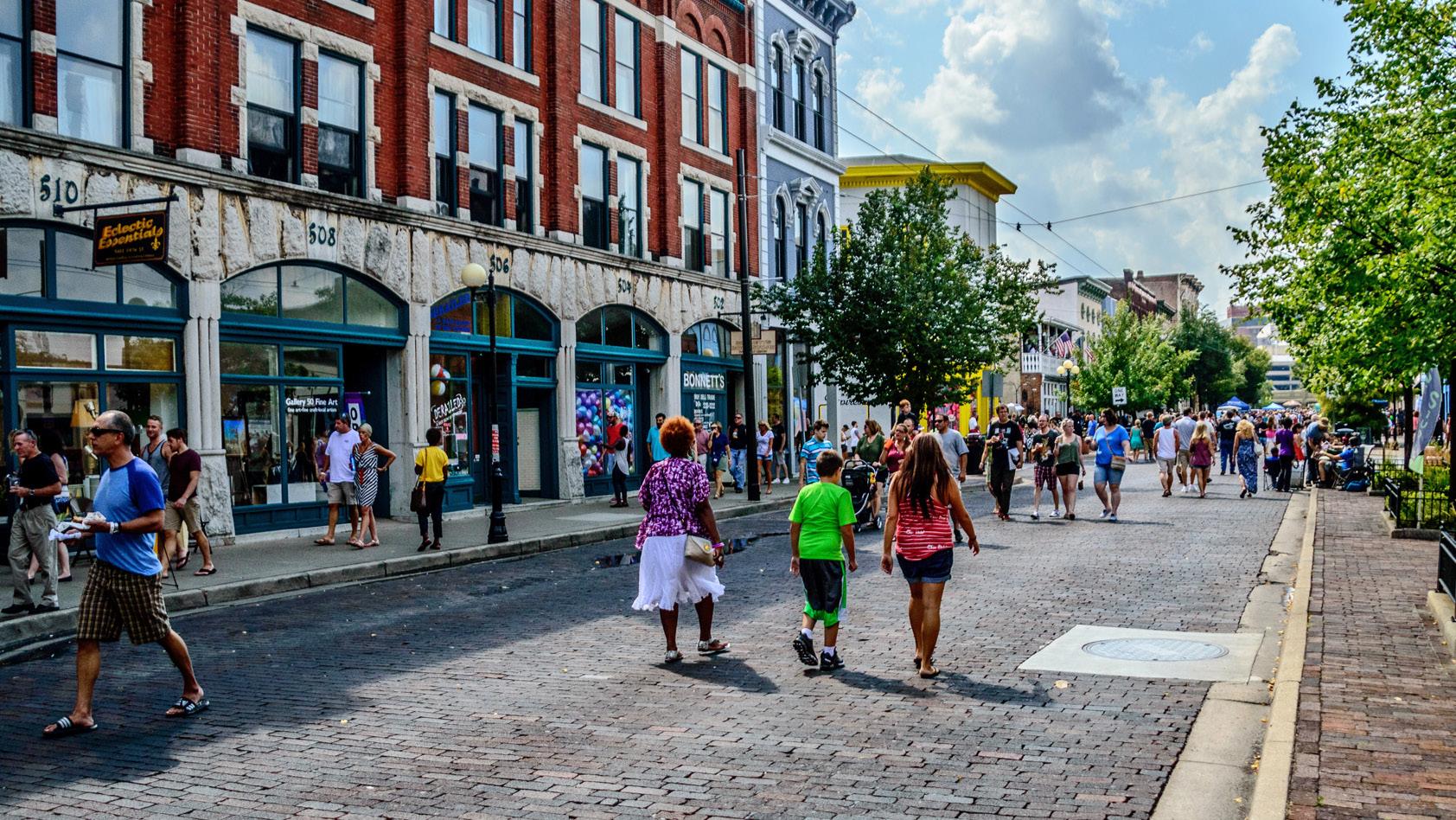
Revitilized Streetscape - E 5th St, Dayton, OH
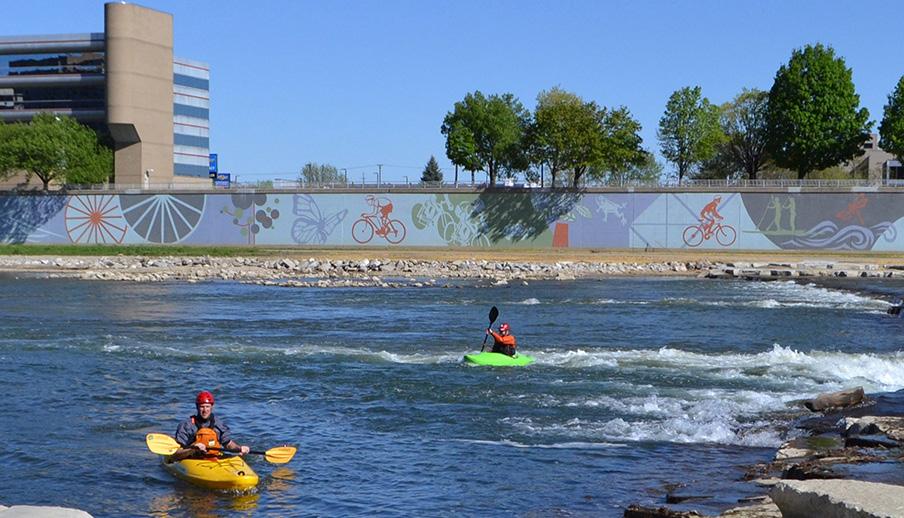
Kayackers at Riverscape River Run Mural - Dayton, OH
R I V E R S M E T R O P A R K , O H
TUCKER COUNTY, WV
Located largely within the Monongahela National Forest, Tucker County, WV, is a hot spot for outdoor adventure and recreation. Local towns still retain the historic Appalachian charm and culture that attracts numerous visitors annually as they travel to their outdoor destinations. Combined with a diverse offering of natural attractions, including hiking, biking, and winter sports, this location brings in a variety of tourists, from serious hikers, to families looking to escape into the forest for a day. The current conditions of the county, however, involved a transition away from coal, timber and related industries to a focus on tourism. This change is essential to the economic success that can currently be seen throughout local communities, and is important to the future of the county.
Historically, this area of WV was known for its coal and timber industries. Most notably, it was home to the Davis Coal and Coke Company, founded by Henry Gassaway Davis in the late 1800s. The success of these industries would cause a boom of development, as immigrants came to the area looking for work. Following a period of high productivity, industry would begin to leave the area, leaving behind the towns that are an important part of today’s tourism industry.
The economic shift in Tucker, WV towards tourism would begin in the 1980s with the creation of Timberline Ski Resort and the further establishment and development of Canaan Valley and Blackwater Falls State Parks. The area, while being known at this time for its hiking and mountain biking resources, was increasingly being recognized as a ski destination. Drawing in visitors from the Washington D.C. area and further, Tucker County would experience the majority of its guests during the winter season through the 1990s. During its peak, 100,000 visitors would travel to the resort annually. Development of smaller resorts in the Appalachian region, closer to the greater D.C. area, would draw these users away from Timberline and Canaan Valley Ski Resorts. This would mark the decline of Tucker County’s importance as a winter destination and its transition to a summer and fall attraction. During the past 15 years, with the further development of Dolly Sods, the Monongahela National Forest, the Allegheny Wildlife Area, and the Canaan Valley National Wildlife Refuge, Tucker County has been defined by summer tourism. Traveling from all over the United States, visitors come to take advantage of the many recreational trails, along with some of the most spectacular views in the state. Blackwater Falls - Blackwater Falls State Park Tuckey County, WV

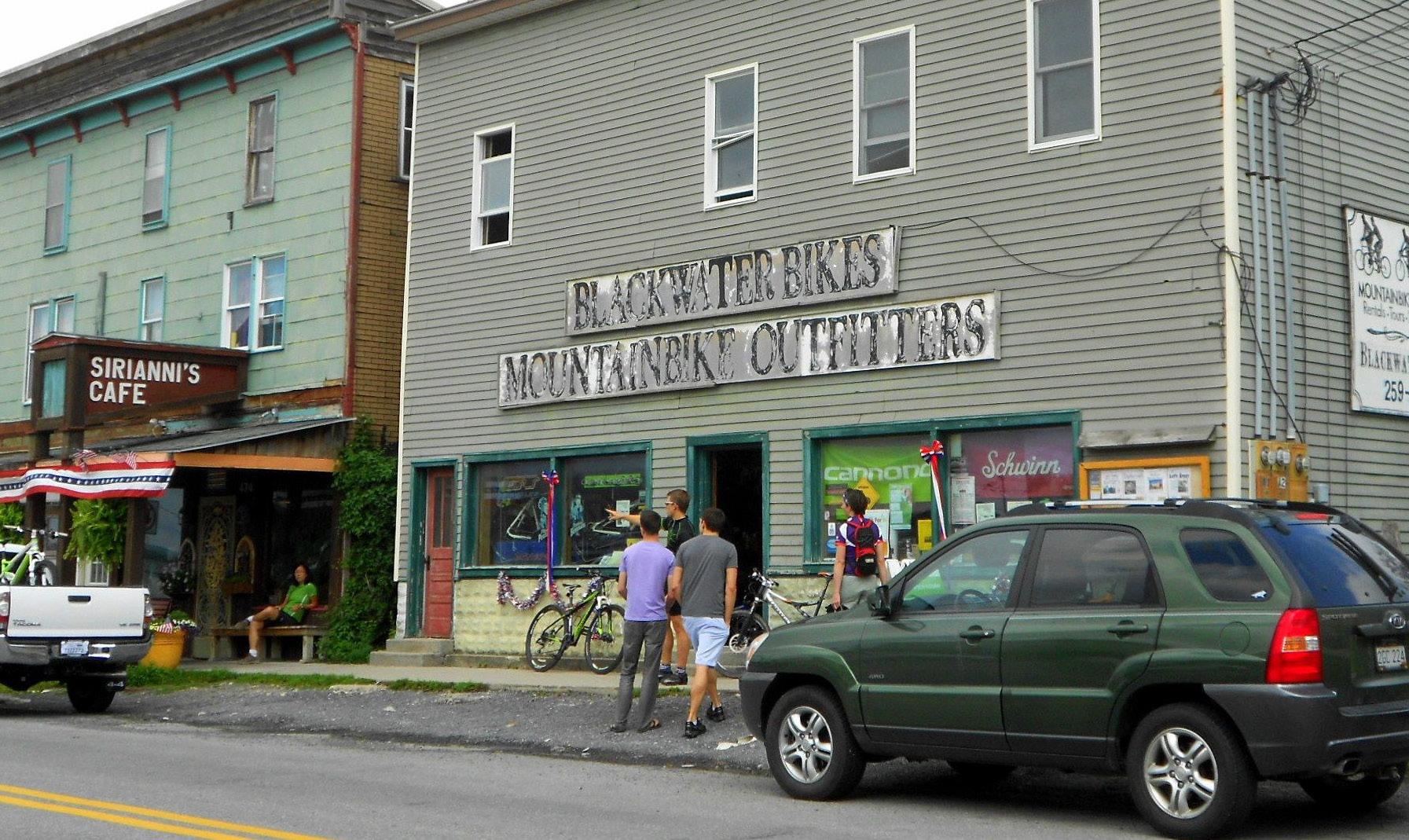
Blackwater Bikes shop - Davis, WV
T U C K E R C O U N T Y, W V
The small towns and communities found throughout the county play an important role in the economic development of the region. Tourists are attracted to these locations, as they are final opportunities to purchase essential food and supplies before departing into the surrounding forests. This creates an important economic opportunity for these communities. The towns of Thomas and Davis, in particular, have fully realized the potential they have within this system. Capitalizing on the local culture, these towns have been transformed into small “hip” communities complete with local shops and eateries. Their uniqueness has attracted not only visitors, but also further economic development, as businesses realize the potential that the area has to offer. The unique culture that has been created, combined with affordable store fronts, has attracted many artisans, breweries, and other shops without the use of incentives. Today these areas only continue to expand.
This local example provides a good illustration of the potential that the Upper Kanawha Valley has to transition away from its industrial history and to be developed into a successful outdoor recreational hub. The surrounding hills in the region provide opportunities to develop unique attractions, creating an identity for the area. This will aid in attracting the attention of tourists, bringing along economic development to the nearby communities. Purple Fiddle - Thomas, WV
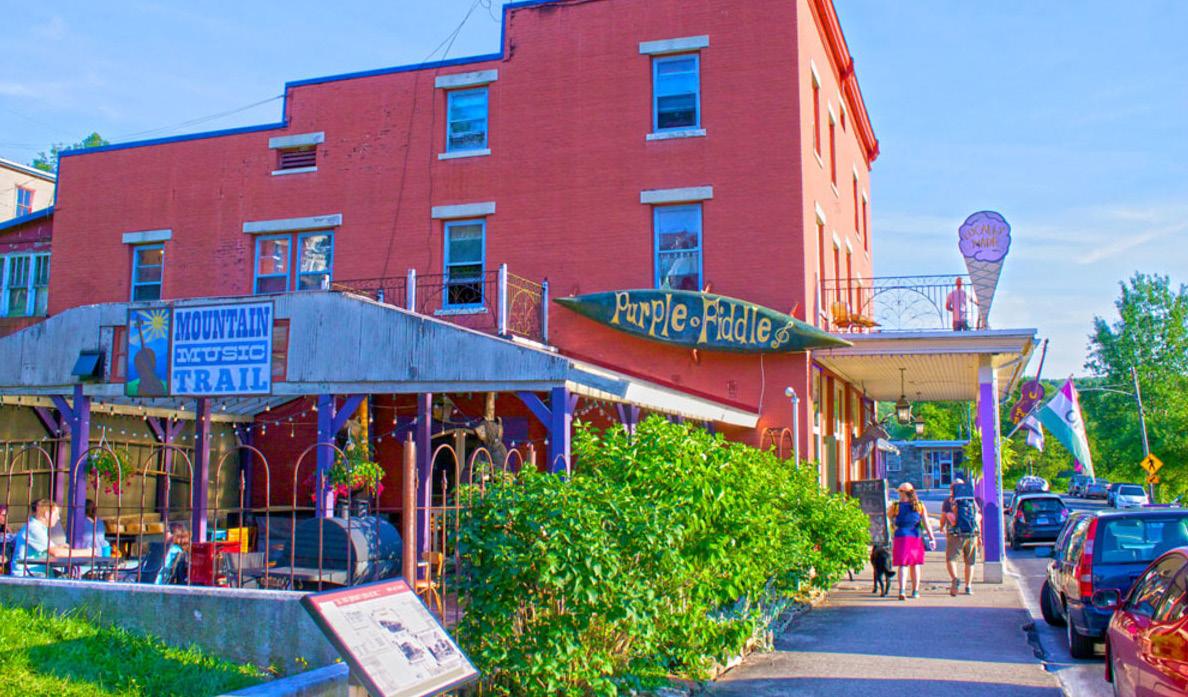
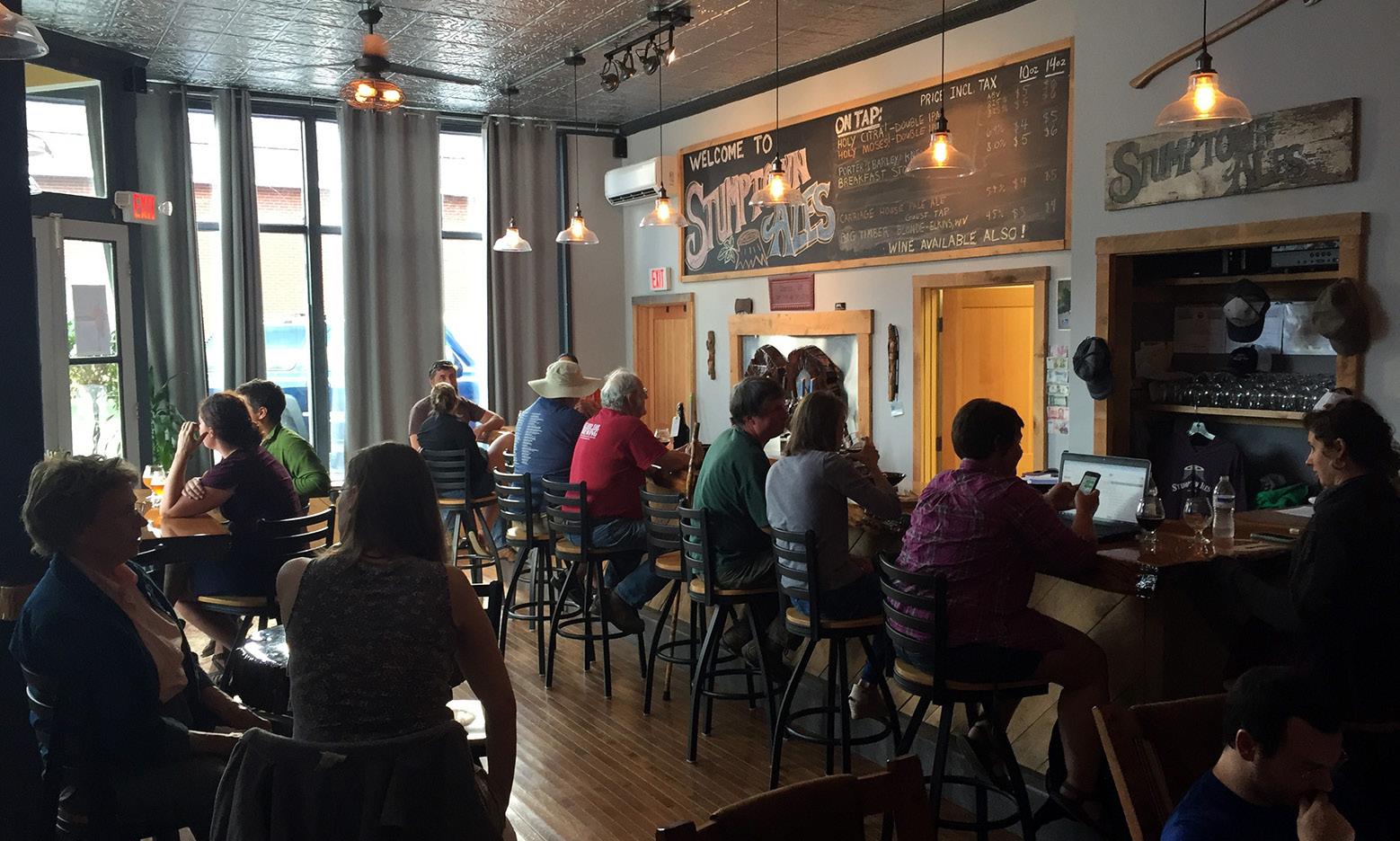
Stump Town Ales - Davis, WV
T U C K E R C O U N T Y, W V
and design elements are visual begin the process of developing a representations of this experience. brand that is co-created by the region Therefore, the towns, people, and to attract visitors to the new recreational Real. Outdoor. Connections. It’s no secret that West Virginia is experiencing a tourism boom, with a growth of 9.9% in two years. The West Virginia Tourism Office’s “Almost Heaven” campaign has resulted in 1.6 billion impressions, showcasing the outdoor experience at the heart of what makes the state of West Virginia special. Recreation spending is also up 10.2%, indicating that tourists are traveling to West Virginia for recreational experiences. This presents an aligned opportunity for the UKV and in the development of its brand. assets of the UKV work to shape the emotional appeal of the UKV and the logos help to instill an identity for that brand. Developing the Regional Brand The UKV is developing its regional assets in a commitment to recreational tourism. However, these recreational assets are only one piece of the puzzle. Beyond the obvious aligned elements of accommodations, eateries, outdoor retail/rental facilities, and more, there remains one important developmental need for the region...the development of its residents. MAJOR ROAD SECONDARY ROAD RIVER BRIDGE TRAFFIC LIGHT PARK LIBRARY POSTAL OFFICE HOTEL RESTAURANT BANK POLICE STATION CEMENTERY CHURCH HOSPITAL CAR RENT Lorem ipsum dolor sit amet, consectetuer adipiscing elit, sed diam nonummy nibh euismod tincidunt ut laoreet dolore magna aliquam erat volutpat. Ut wisi enim ad minim veniam, quis nostrud exerci tation ullamcorper suscipit Lorem ipsum dolor sit amet, consectetuer adipiscing elit, sed diam nonummy nibh euismod tincidunt ut laoreet dolore magna aliquam erat volutpat. Ut wisi enim ad minim veniam, quis nostrud exerci tation ullamcorper suscipit lobortis nisl ut aliquip ex ea commodo consequat. Duis autem vel eum iriure dolor in hendrerit in vulputate velit esse molestie consequat, vel illum dolore eu feugiat nulla facilisis at vero eros et accumsan et iusto odio dignissim qui blandit praesent luptatum zzril delenit augue duis dolore te feugait nulla facilisi. Lorem ipsum dolor sit amet, cons ectetuer adipiscing elit, sed diam nonummy nibh euismod tincidunt ut laoreet dolore magna aliquam erat volutpat. Ut wisi enim ad minim veniam, quis nostrud exerci tation ullamcorper suscipit lobortis nisl ut aliquip ex ea commodo consequat. Lorem ipsum dolor sit amet, consectetuer adipiscing elit, sed PUBLIC BOAT LAUNCH playground of the UKV. A brand mapping process should be initiated to establish a deeper understanding of the audiences that UKV is looking to attract, as well as set core foundational elements of the brand. A brand map is a way for regions to visually see all elements of a brand and how those elements relate to one another. It is important to understand how the rational and emotional appeal of a region’s audience is influenced by a brand through identity, core messaging, etc. The brand mapping process explores elements of the But how do we develop a brand that attracts tourists to UKV? The Baseline Before diving into the aspects of regional branding and a strategy for regional brand development for the UKV, it is important to establish a clear definition of the term “brand.” Many people interchange the words “brand” and “logo,” which is incorrect. A logo is an element of a brand but is not its total. Digital guru, Ze Frank, defines “brand” as the “emotional aftertaste” following someone interacting with your company, product, or service. In thinking about the brand of the UKV, we are thinking about the emotional aftertaste someone has after visiting and experiencing the Valley. The experience establishes the brand--the towns, the people, the assets--all help to inform and influence the emotional connection with the audience. Logos Building a regional attraction strategy and brand takes buy-in from the local residents and a spirit of determination to drive this strategy forward. Utilizing a region’s citizens in the development of a regional brand is an ideal way to build understanding, excitement, and engagement amongst a region. The most successful organizational, municipal, and regional brands are co-developed by leadership and their constituents. Top-down branding is not easily embraced by residents and can be construed as being forced onto citizens. When residents are engaged in an intentional branding process at a grassroots level, passion for the cause is exponentially earned and achieved. Therefore, this report does not seek to build the brand for the UKV. Rather, this report will provide foundational guidance on how the UKV region can brand that exist, gaps in the brand, and areas that may stand for some improvement. Parts of the brand map typically include: ● Impact audience ● Rational appeal ● Emotional appeal ● Problems/Solutions ● Vision Statement ● Mission Statement ● Personality Traits ● Brand Promise ● Belief Statement ● Core Values ● Value Proposition ● Competition ● Market Opportunity ● Tone ● Channels ● Growth Opportunities ● Interactions A brand map will provide structure for
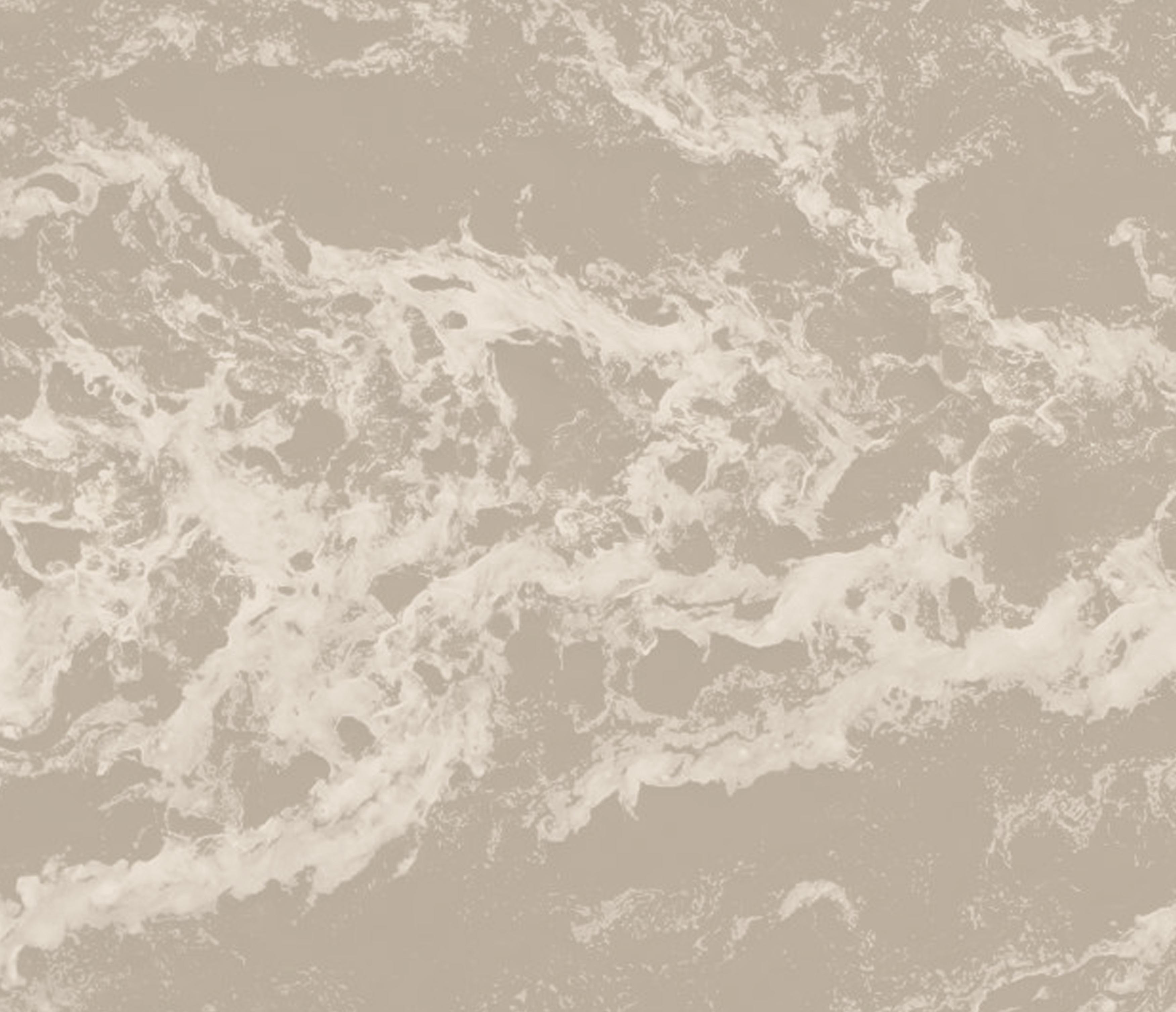
HIKING 5.2 MILES
